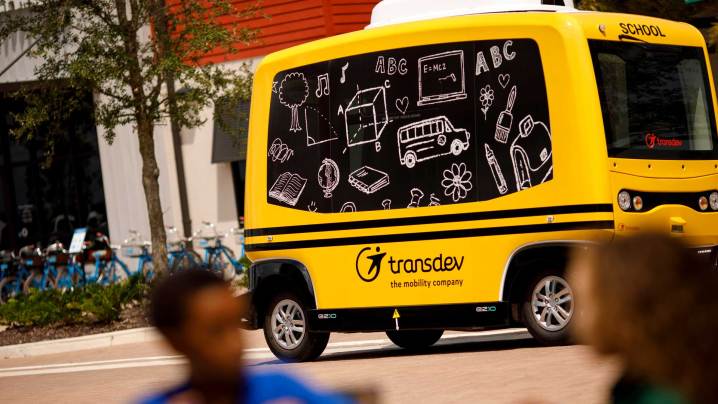
Self-driving technology has come a long way in a short period of time, but it still has a long way to go. While companies have had troubles getting clearance to put autonomous cars on the roads, French firm Transdev has been operating a self-driving school bus that has been taking kids to school in Florida. That operation is no more following a government intervention.
The National Highway Traffic Safety Administration sent a letter to Transdev’s branch in North America asking the company to cease operation of its school bus program, according to Jalopnik. Transdev had been using it EZ10 Generation II autonomous shuttle to transport up to 12 kids to and from the Babcock Neighborhood School in Florida.
“Innovation must not come at the risk of public safety,” Heidi King, NHTSA deputy administrator, said in a statement. “Using a non-compliant test vehicle to transport children is irresponsible, inappropriate, and in direct violation of the terms of Transdev’s approved test project.”
The whole incident appears to be the result of miscommunication. The NHTSA did give Transdev permission to “temporarily” use its autonomous shuttle for limited purposes, including testing and demonstrations. The agency claims to have never given the company the green light to actually use the driverless vehicle as a school bus. Doing so would require Transdev to pass a number of other safety requirements that it had yet to complete. Seeing as there have been autonomous bus accidents in the past, it’s a reasonable concern.
“Transdev failed to disclose or receive approval for this use. School buses are subject to rigorous Federal Motor Vehicle Safety Standards that take into account their unique purpose of transporting children, a vulnerable population,” the agency explained in a release.
It is somewhat odd that the NHTSA decided to crack down on Transdev now. The company pretty clearly and publicly noted its intentions to run operate the self-driving bus in August and has apparently been doing so without interruption until now. NHTSA threatened “civil penalty action” if Transdev didn’t immediately halt operations of its bus services. While the company has yet to comment on the situation, it apparently signaled to NHTSA that it will stop running the bus for the time being.
Editors' Recommendations
- Tesla issues stark warning to drivers using its Full Self-Driving mode
- Self-driving shuttle services halted after sudden stop causes injury


